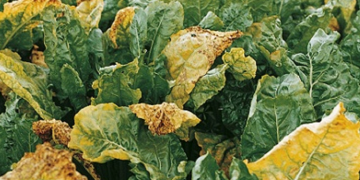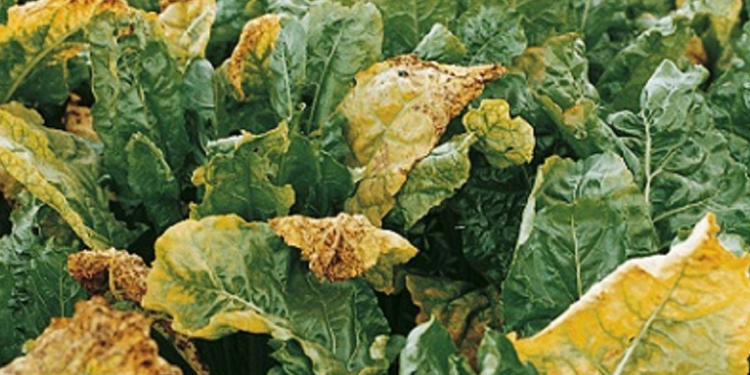#PlantPathogen #CropDisease #SugarBeetIndustry #Aphids #DiseaseManagement #CropRotation #DiseaseResistance
Beet yellows virus (BYV) is a plant pathogen that infects sugar beet and other related crops, causing significant losses in crop yield and quality. This virus is transmitted by aphids and can quickly spread within and between fields, making it a serious threat to the sugar beet industry.
The development of BYV infection in sugar beets typically starts with yellowing and stunting of leaves, followed by the appearance of characteristic bright yellow veins in the foliage. This can lead to reduced photosynthesis, smaller root systems, and lower sugar content in the beets, resulting in decreased yield and economic losses for growers.
One of the most significant consequences of BYV infection is the reduction in quality and sugar content of the beet crop, which can have significant economic impacts on sugar beet farmers and the sugar industry as a whole. The virus can also affect other related crops, such as spinach and Swiss chard, causing similar symptoms and crop losses.
To prevent and control the spread of BYV, it is essential to implement appropriate management practices, including the use of insecticides to control aphid populations and the adoption of disease-resistant cultivars. Additionally, farmers can also implement crop rotation practices to reduce the likelihood of BYV infection.
BYV is a serious threat to sugar beet production and related crops, and appropriate measures should be taken to prevent and control its spread. The implementation of appropriate management practices and the adoption of disease-resistant cultivars can help protect against BYV and ensure the continued production of high-quality sugar beets.































